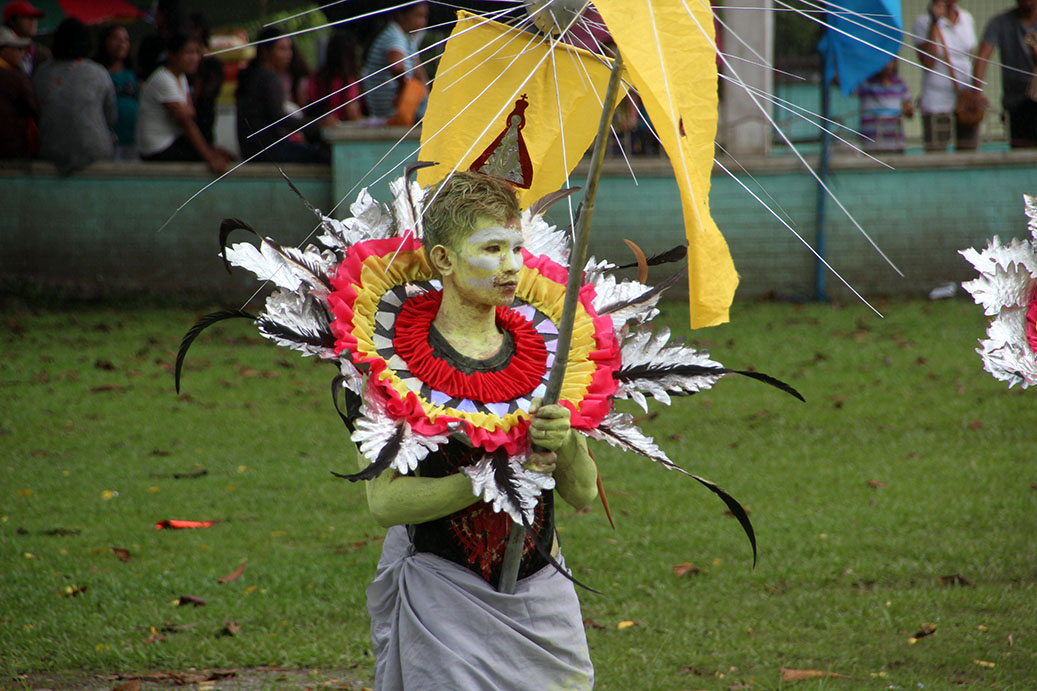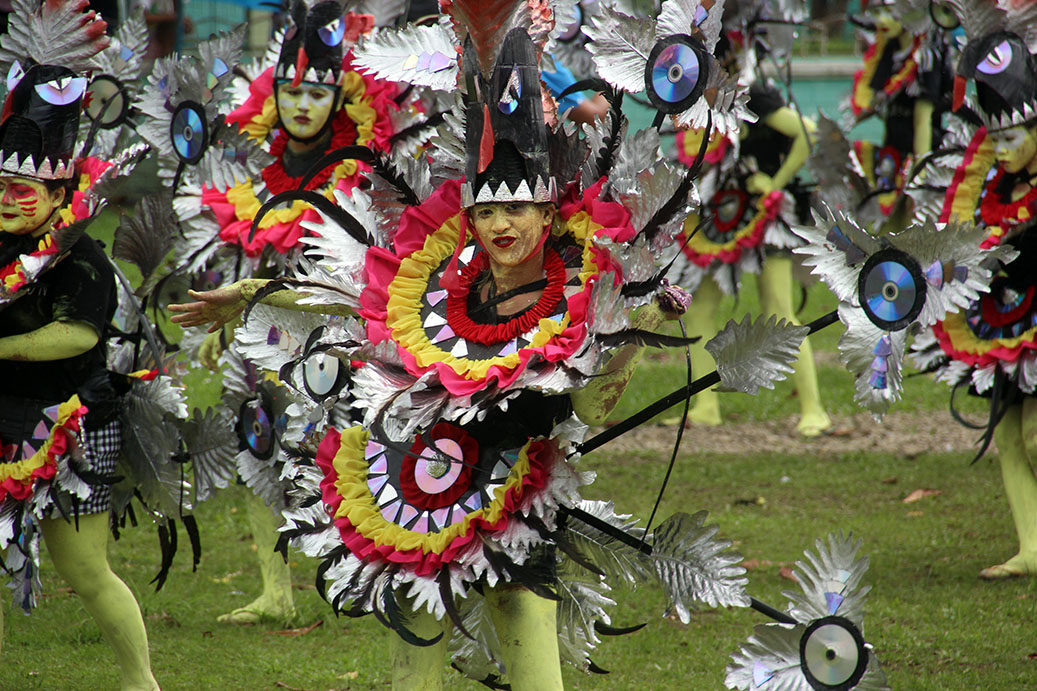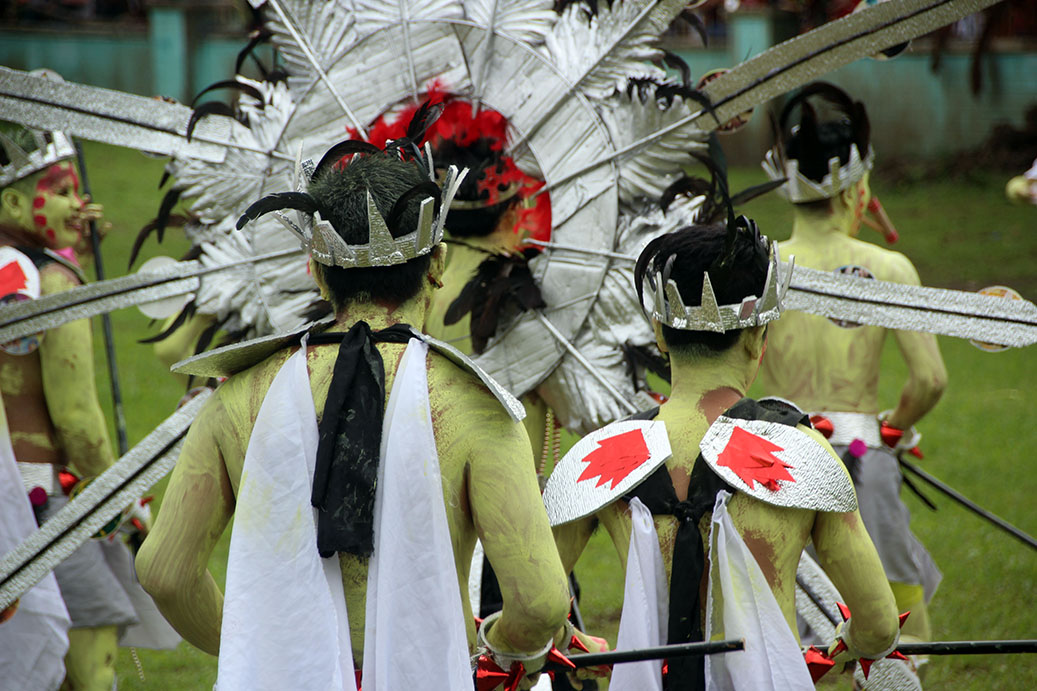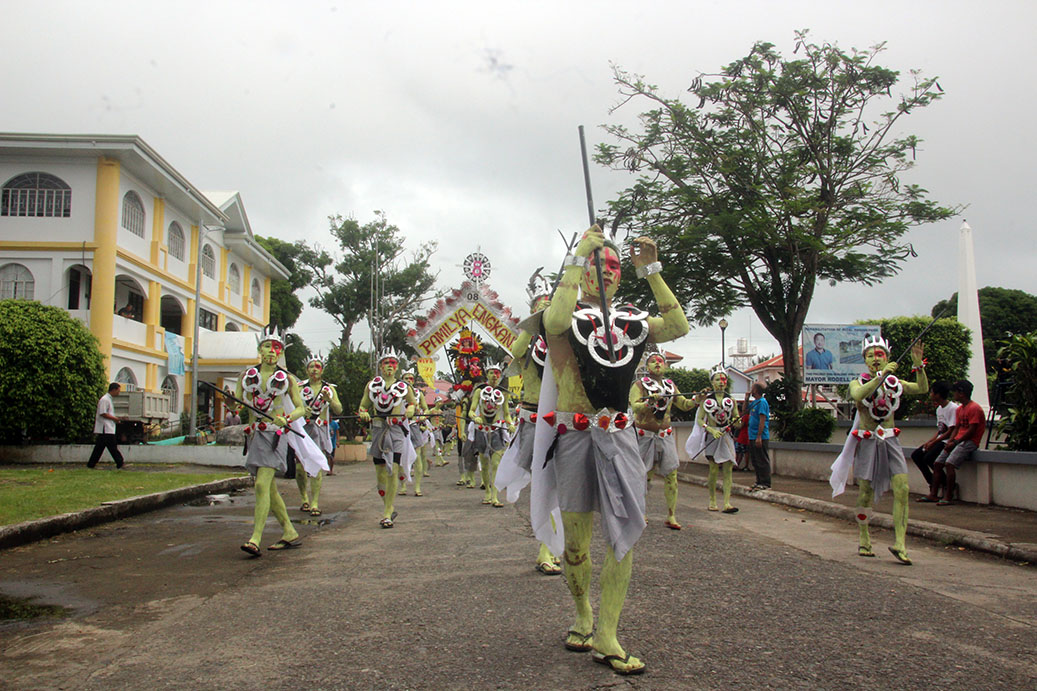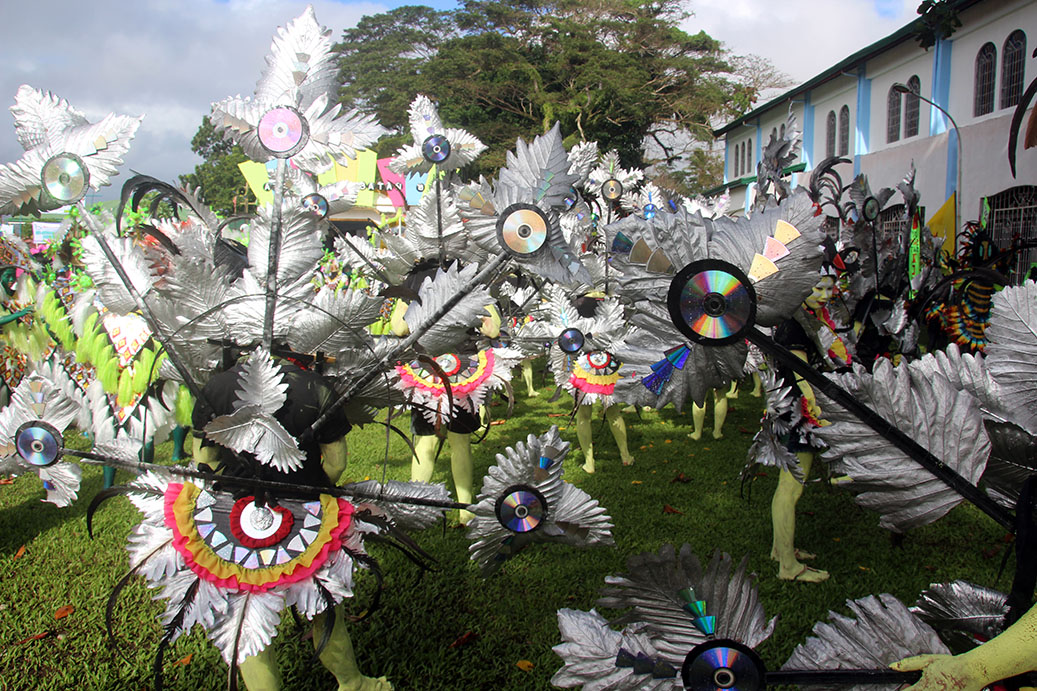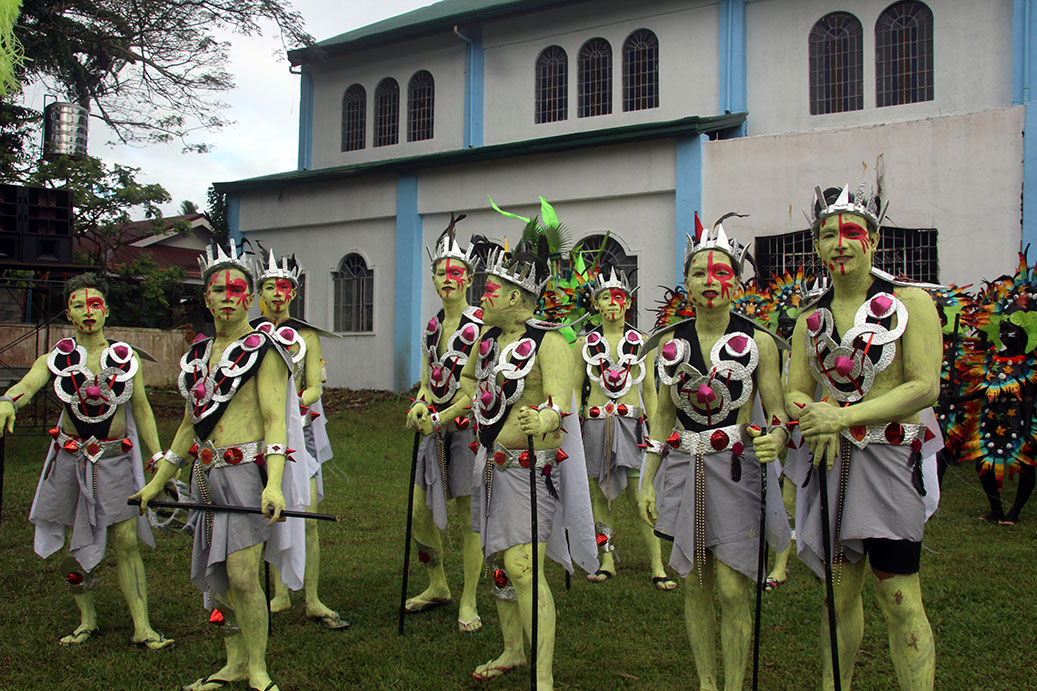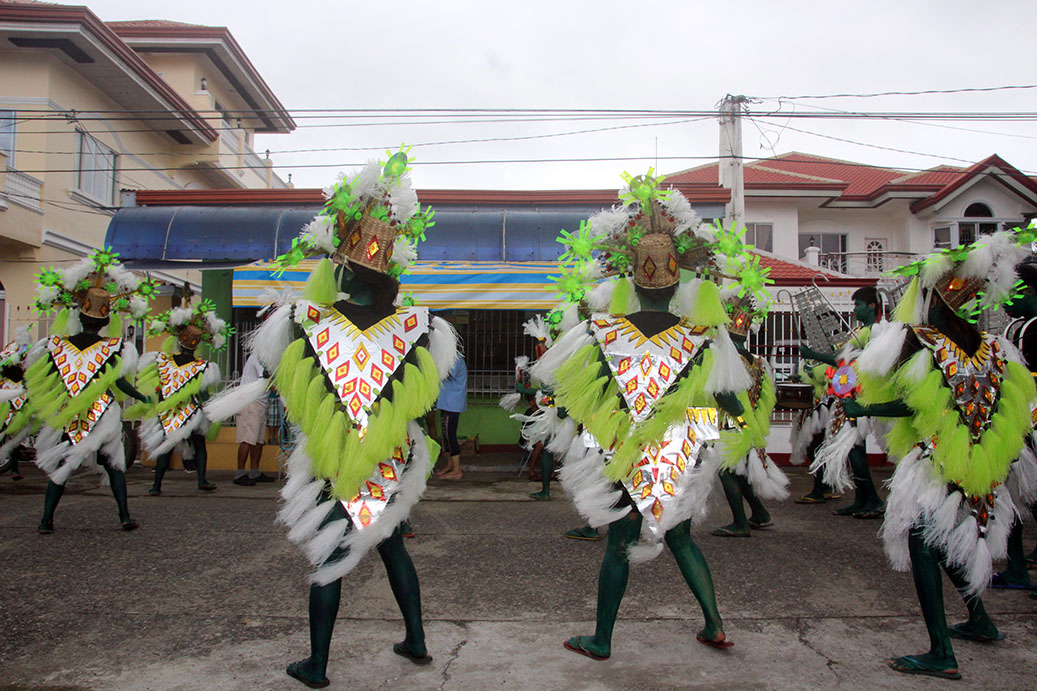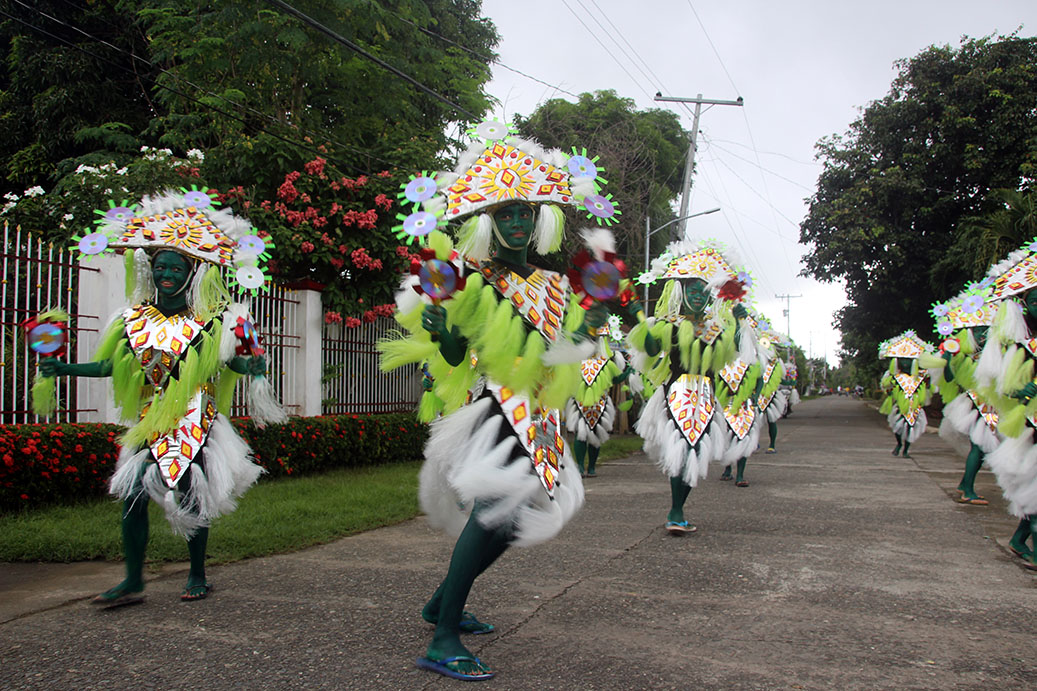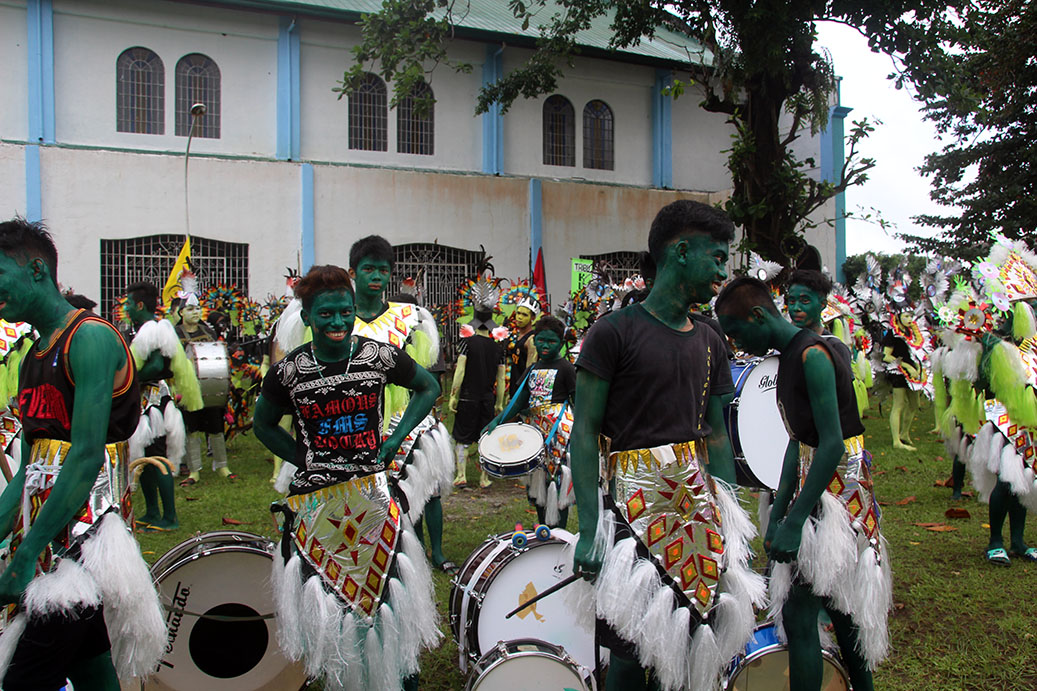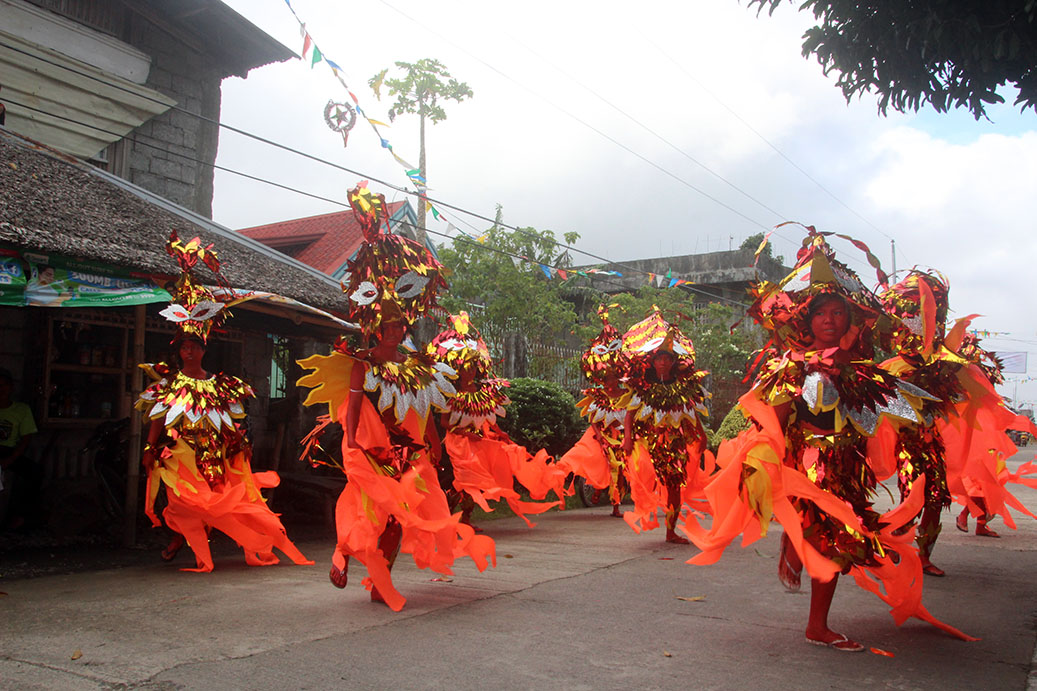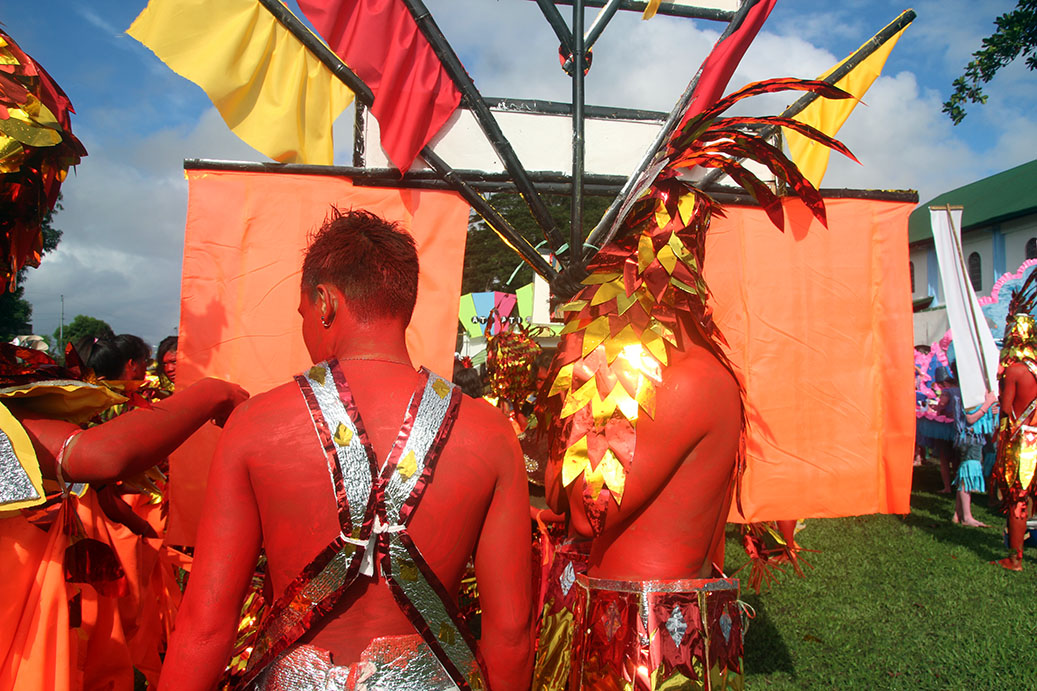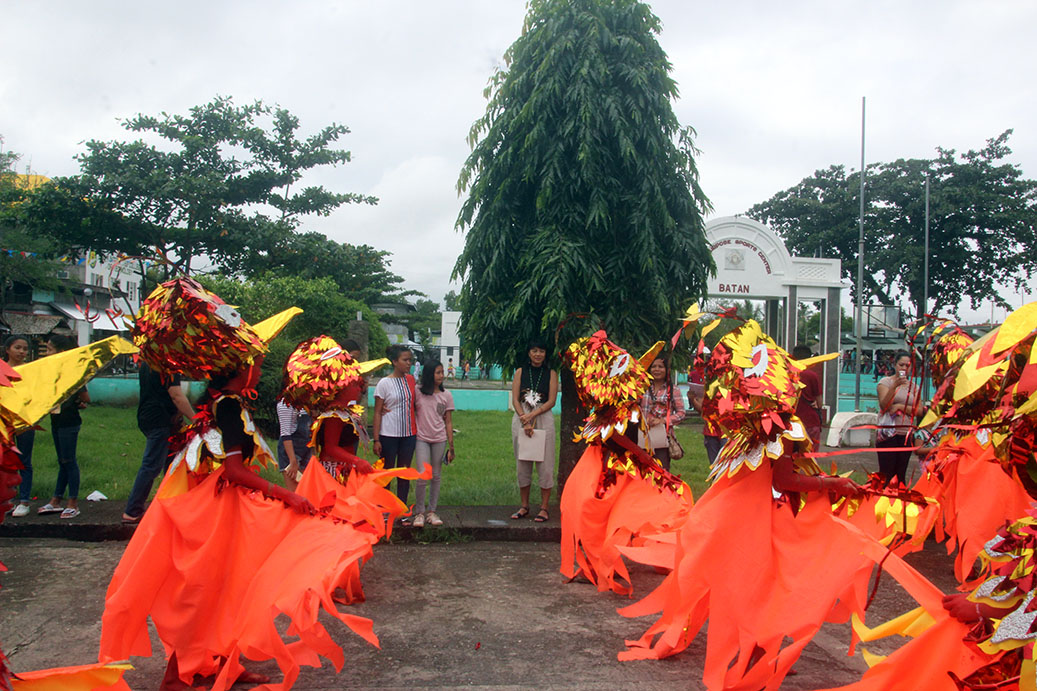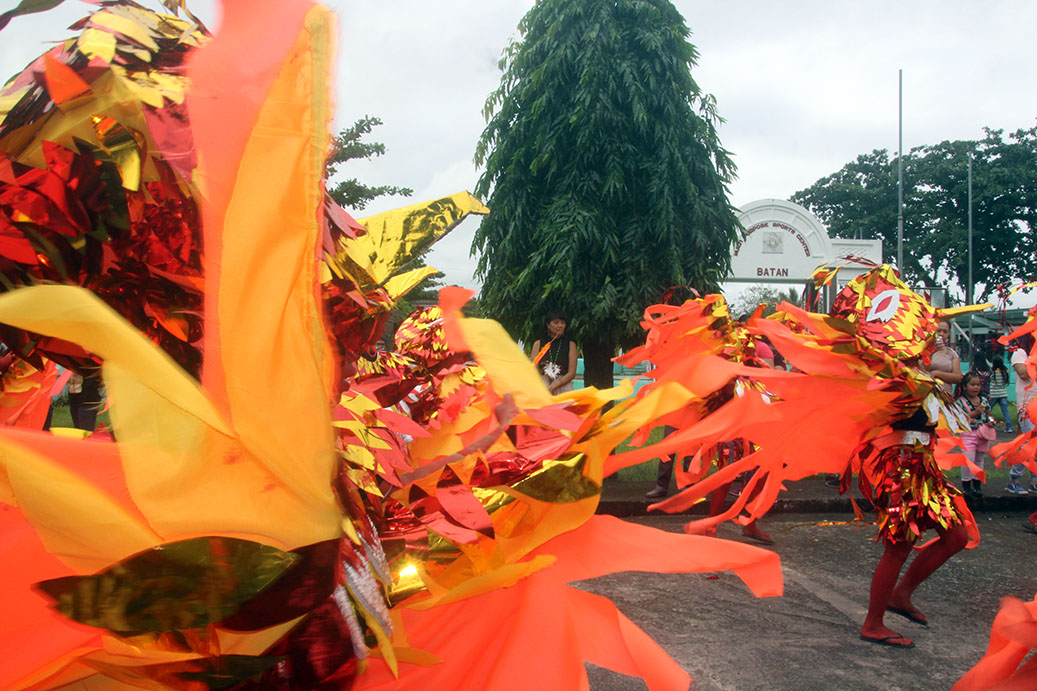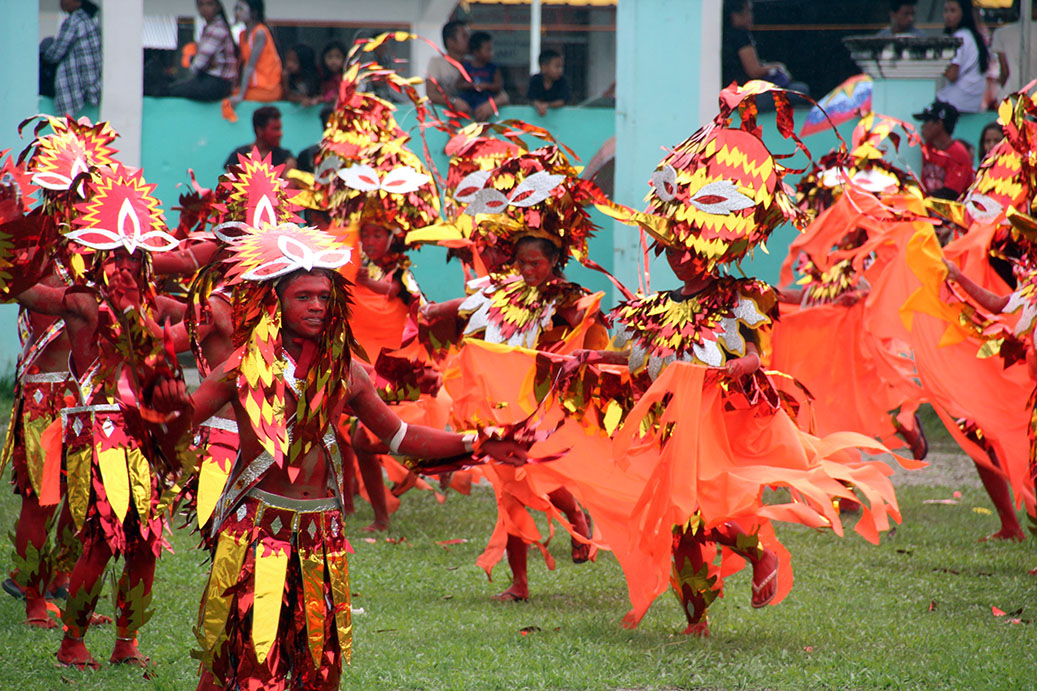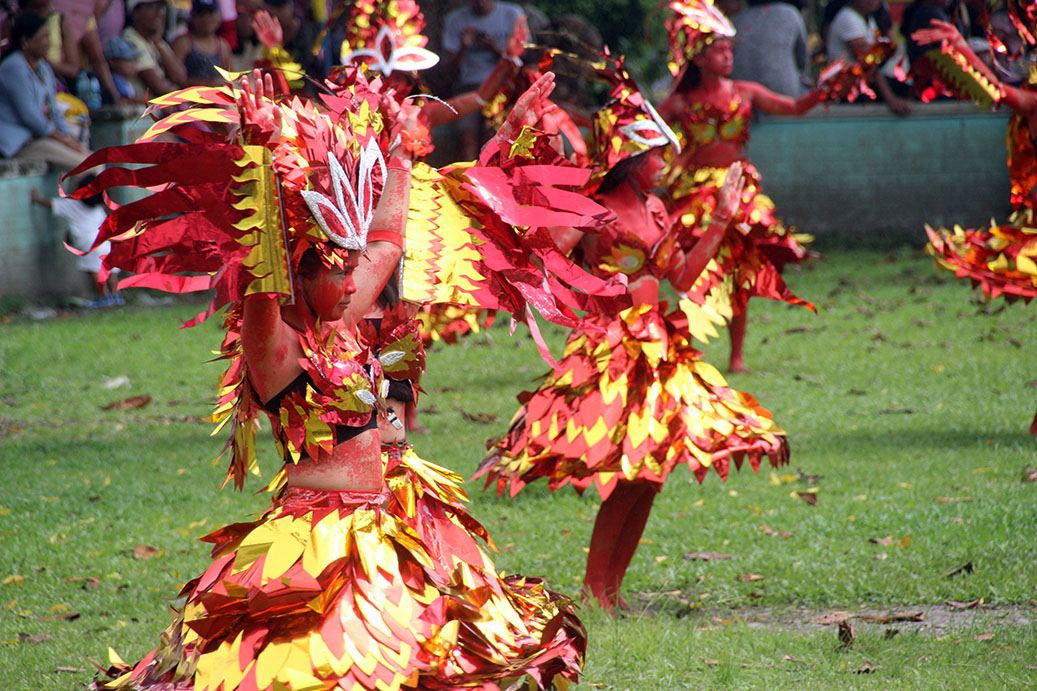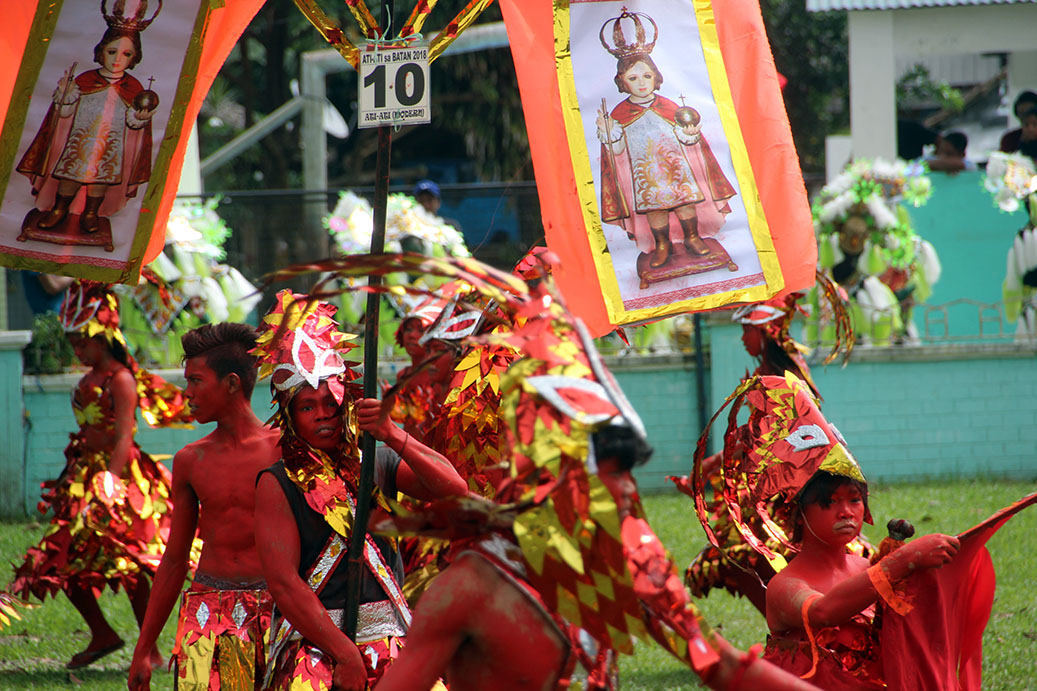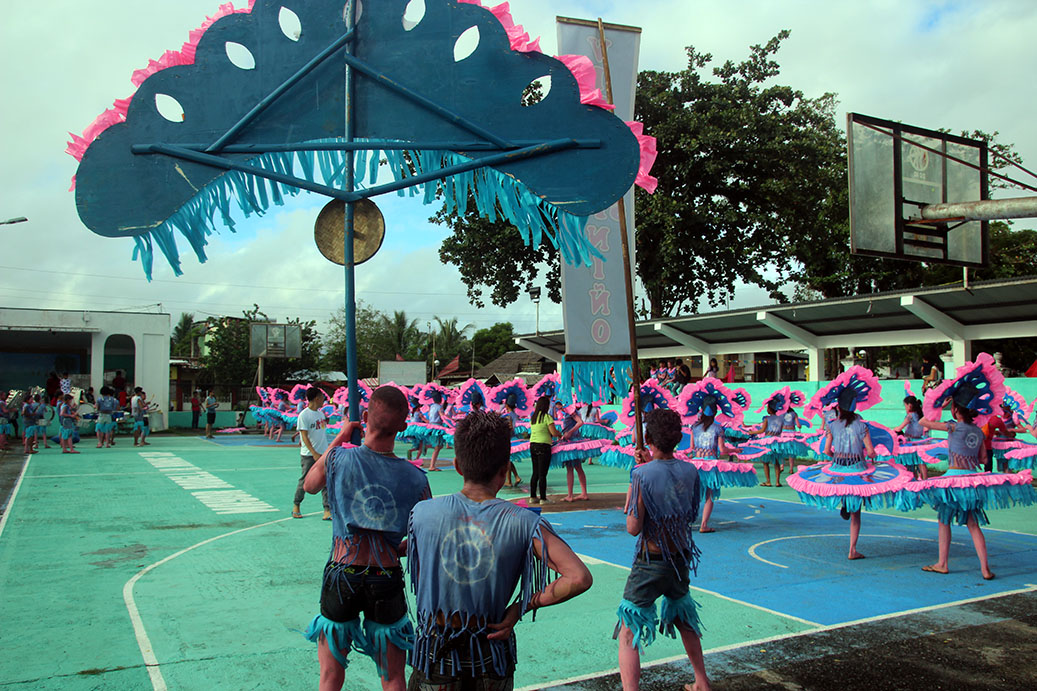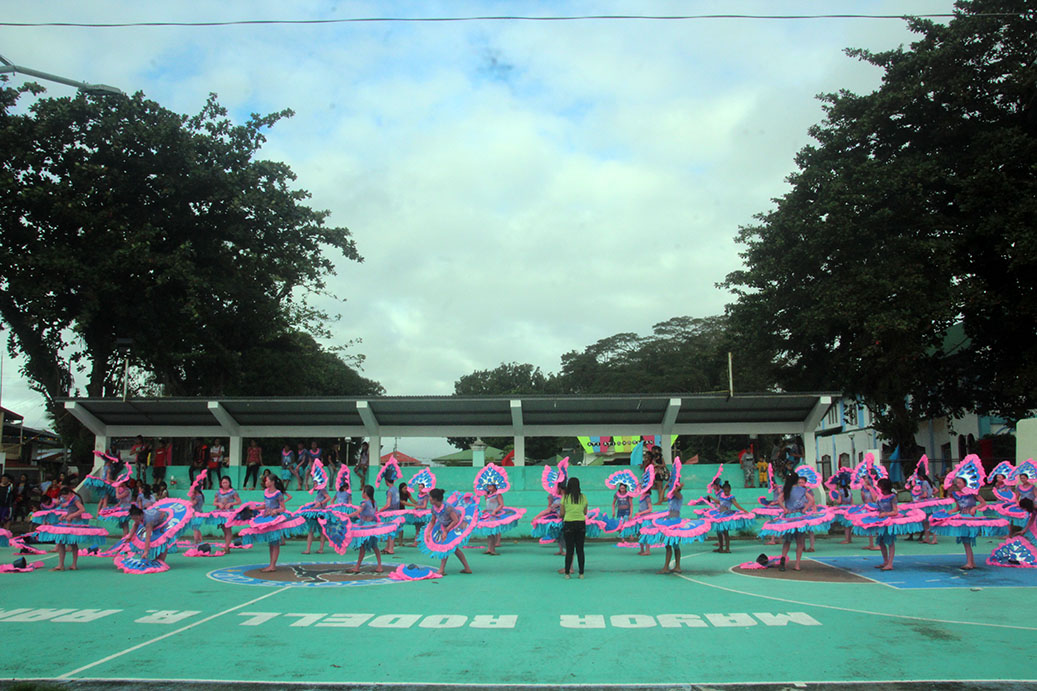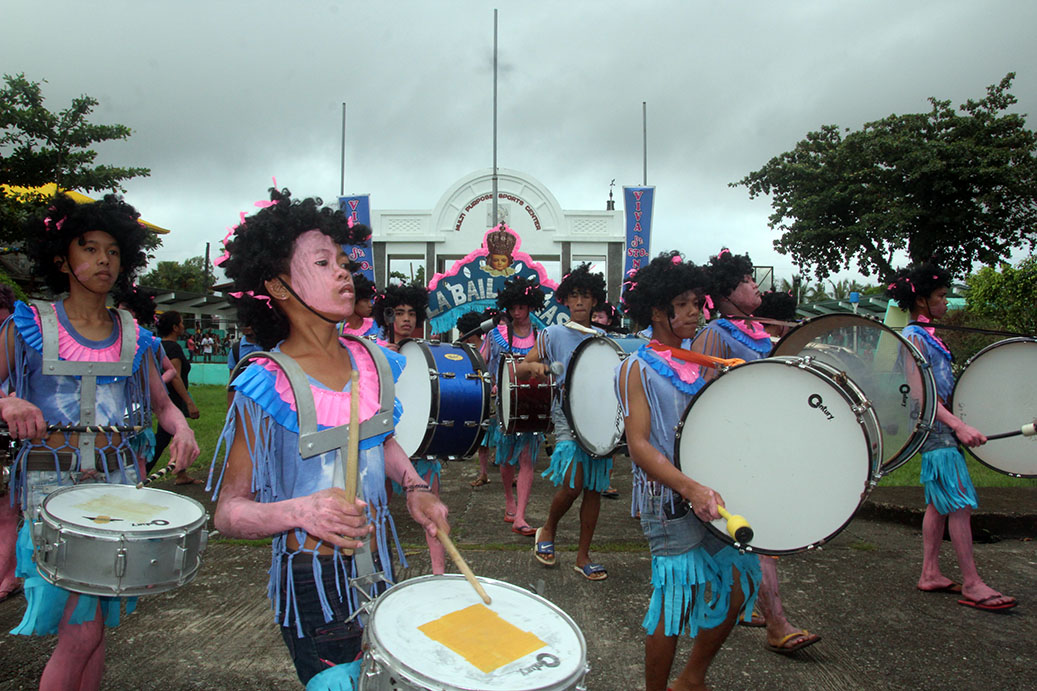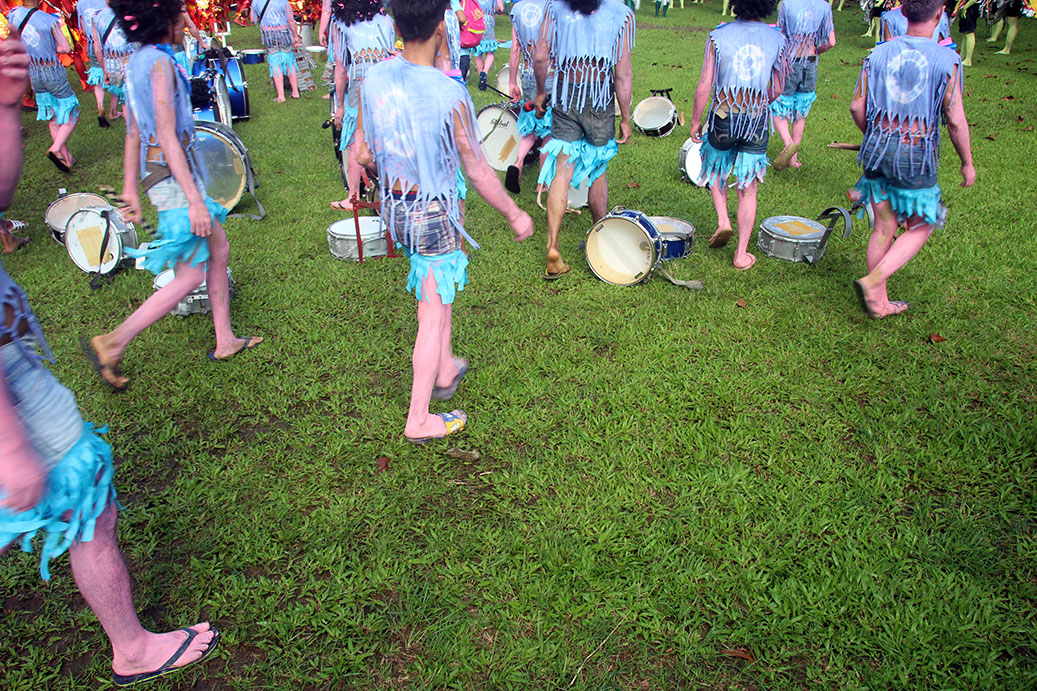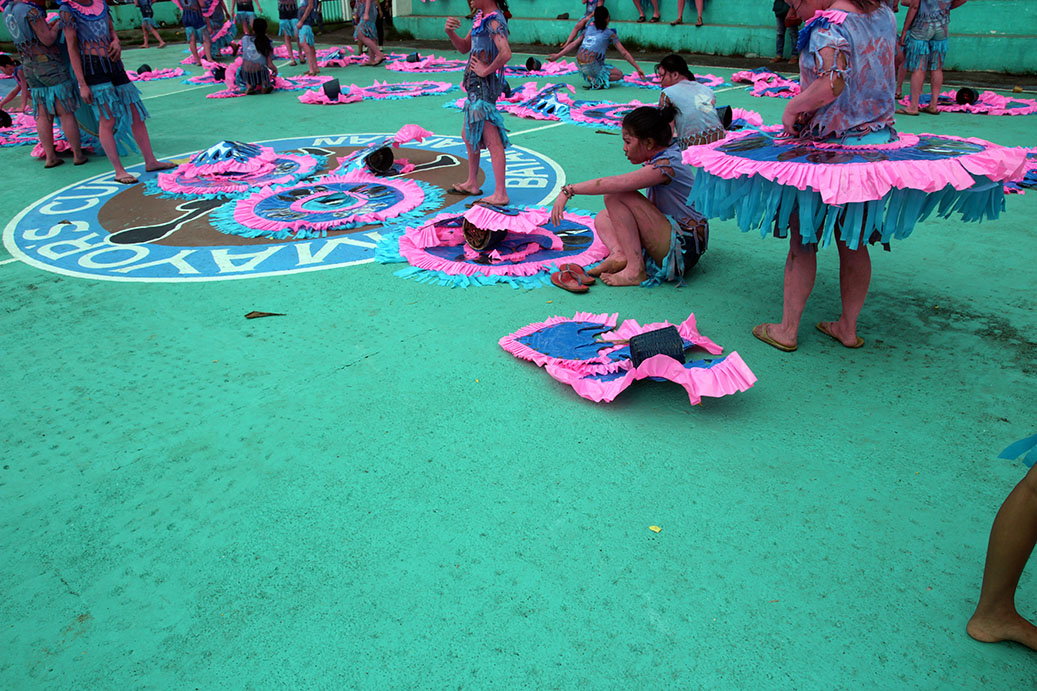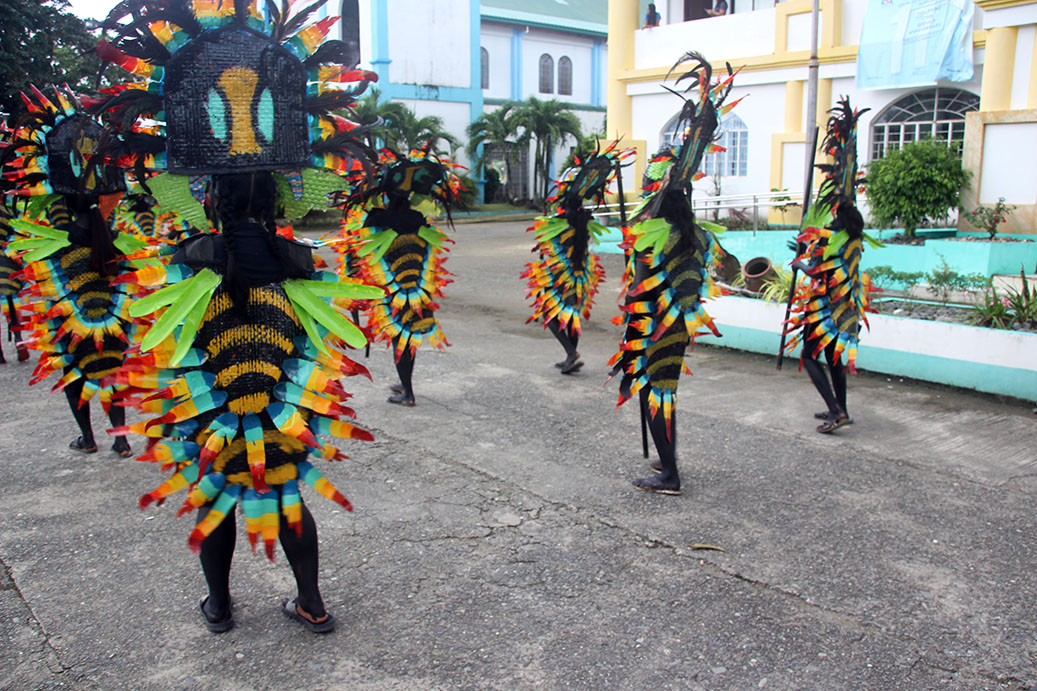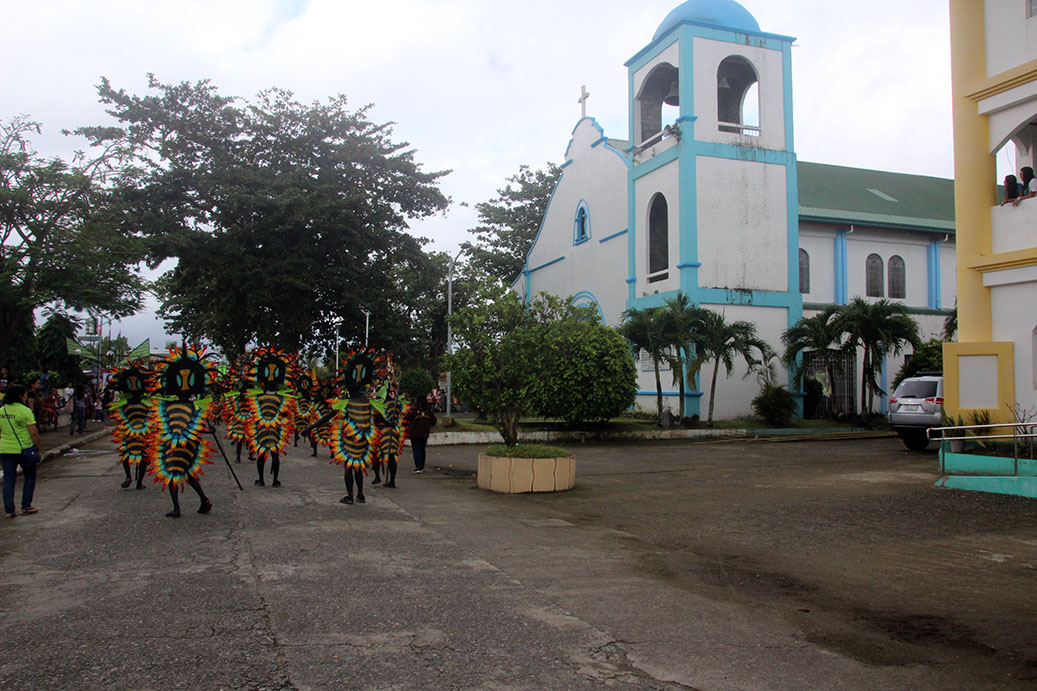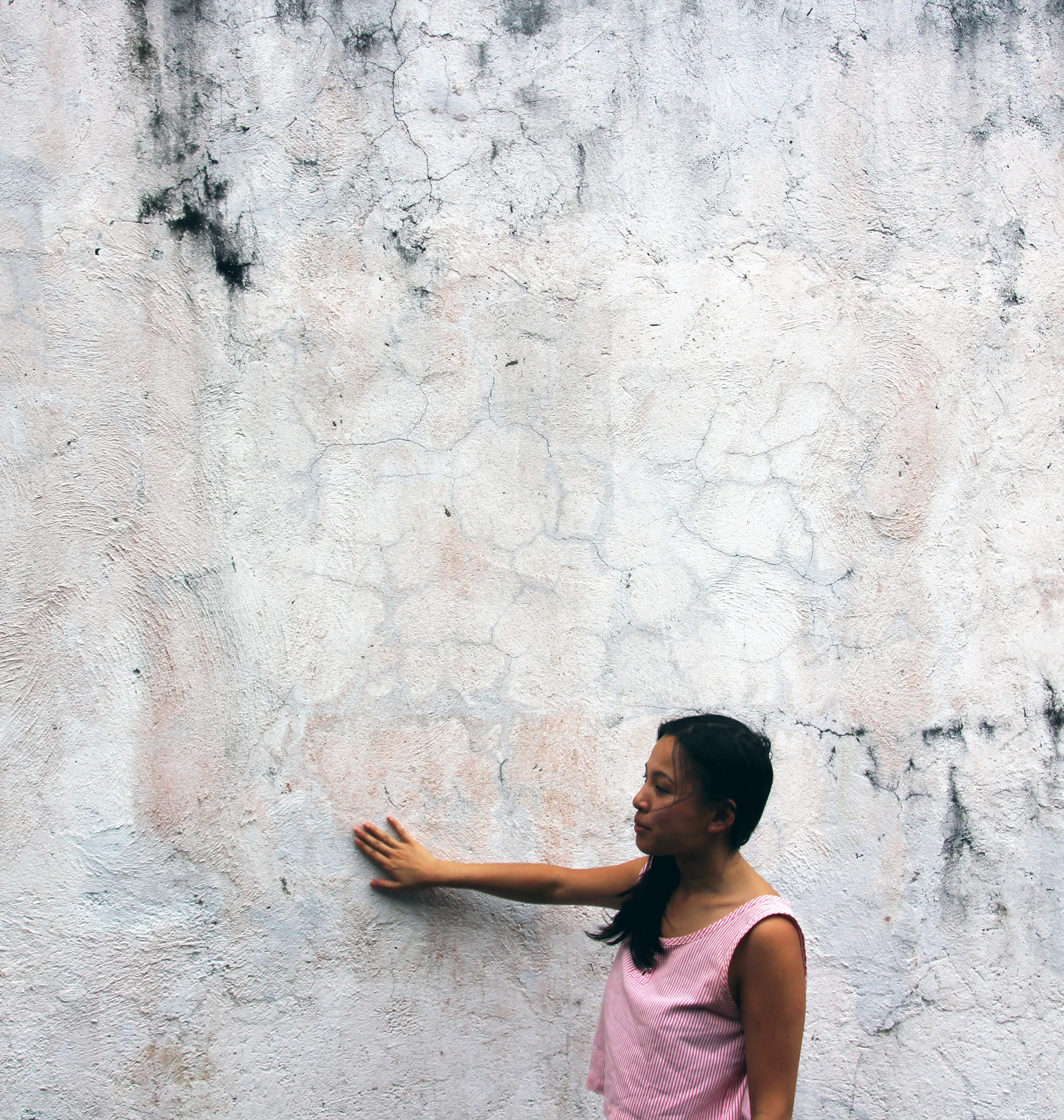Coming together for the Malakara Festival
Entry by Ryan Romero
January 2018
It was as a tropical kaleidoscope. Documenting was was even made difficult with some colours not registering correctly through the lens. It was hard to believe everything before me was all made by hand. Sprite bottles were cut and splayed open like propellers and Nipa leaves stretched and interlaced into bellowing skirts. With the deep sounds of the bass drums chasing after the rasp of accompanying snares, Batan was in loud celebration.
Batan's Ati-ati festival is broken in to two major events. The Malakara Festival, held on Saturday, and the actual Ati-ati sa Batan on Sunday.
Batan's Ati-ati festival is made up of two major events. The Malakara Festival, held on Saturday, and the main event, Ati-ati sa Batan on Sunday. Of the two, The Malakara Festival is the "modern version". Utilizing contemporary materials such as CDs, 2 litre pop bottles, Neon coloured nets, glass shards, shiny mylar and tin foil, the whole aesthetic told a very accurate picture of daily life.
All the Tribu's, or tribes marched in their full regalia through town before making their way to the field before the stage where judges sat. After all the tribus made their entrance, the parade convened for another parlay around the town. Some tribu's paraded for hours before coming back before the judges, for the final deliberation.
Some tribu's even hired choreographers and coaches to perfect their routine. This professional advantage however, was hard to discern.
FROM WIKIPEDIA:
Santo Ninohan or Ati-atihan and Malakara Festival (in honor of the Holy Child) — celebrated every third Saturday and Sunday of January. This festival is similar with the well-known Ati-atihan of Kalibo. Its difference from Kalibo's Ati-atihan is that participants are required to use native and indigenous materials as the main component of their costumes.
Ati-Ati Festival is named after the indegenious people native to the Panay island. The festival is said to have started to celebrate the ammicable agreement between the Borneos and the Ati's to share the land. The Bornos settled near the water while the Ati's retreated up the mountains. Like most settler narratives, this story feels half empty. Compounded by the addition of the Spanish colonial influence, Ati-Ati Festival has evolved to honour the Santo Nino, or Christ Child.
This is my first Ati-Ati Festival experience and it was powerful. Mostly children and teenagers representing schools from different barangays, the tribus fed off the energy of the spectators, while the spectators burst with pride for the incredible spectacle. Prepared months in advance, the two day event was a culmination of all the hard work and dedication of so many. Most everyone had 'sad sad' or danced along with the tribus all weekend, stopping and resting only for lunch. Organizations, local businesses and clubs also came together to from their own tribu, distinguished by matching shirts and banners. Some even hired marching bands to accompany their sad sad.
Sufficed to say, Batan streets were desserted in a collective hangover come Monday morning.
Pamilya Enkantos
Encantadia
Tribu Salin
Blazing Phoenix
La Bailarinas
Tribu Kutapti
Being suspect of the events' history, as well being acutely aware of Ati's lack of participation, it was not hard to be uncomfortable about it all . But this is the inbetweenness of our position at Elmo's House. As Canadians, we have been listening and partaking in conversations about indigenous reconciliation and the challenges this represents in all facets of occupying space in Canada. But as I contemplate these things, and try to navigate our multifaceted role as spectator, new Batangnons, Canadians, artists, citizens of the world, I know the first step is to learn more. I for one, will take the role of student for a while longer before I deign to self elect as teacher.
Note: Not specified above are the rest of the tribus: D'Firey Bes (Batan Acadamy), D'Chinese Gar Teen, Small Bat Terrible, Amazing Dalmatians, BLCians and Millenions (Tabon).

















